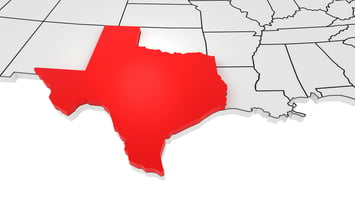Running a medical practice involves managing dozens of ongoing costs, and understanding them is...


Starting or growing a medical practice in Texas comes with its fair share of logistical challenges, but few are more critical than completing the physician credentialing process. Whether you’re opening a new clinic in Austin or adding a new specialist to your Fort Worth group, the credentialing process for physicians is what ensures compliance, payer reimbursement, and uninterrupted patient care.
Yet, many practices stumble at this stage, not because they’re disorganized, but because the process is packed with technicalities, deadlines, and payer-specific requirements. In Texas, with its blend of national insurers, Medicaid managed care organizations (MCOs), and independent hospital systems, credentialing can feel like assembling a 1,000-piece puzzle, without the box lid.
This comprehensive physician credentialing checklist is designed to walk you through every step, whether you’re a new practice or expanding your team. From documentation to payer applications, this guide simplifies the healthcare credentialing process and helps you avoid the most common setbacks.
Setting up a new private medical practice in Texas requires coordinated legal, operational, and clinical preparation. This provider credentialing checklist walks you through everything needed to credential your first physician in Texas.
File with the Texas Secretary of State, choose a compliant structure (PLLC, PA, etc.), and apply for your Employer Identification Number (EIN) from the IRS. Download the CP-575 or 147C confirmation letter for payer documentation.
Lock in a permanent physical location in Texas and set up your office phone and fax lines. These are required in most credentialing portals.
Submit your group’s National Provider Identifier (NPI) application through the NPPES system.
Build a CAQH ProView profile for the group and each provider. Ensure all information is complete, accurate, and attested, including Texas-specific details.
Determine which payers your group will work with: Medicare, Texas Medicaid, commercial carriers (e.g., BCBS of Texas, Aetna, Cigna), MCOs, TPAs, and Tricare.
Draft a completed W9 and collect foundational business documentation like articles of incorporation, licenses, and CLIA certificates if needed.
If the provider won’t hold direct privileges, arrange for a covering physician or hospitalist group in your area. Many payers require this even for outpatient-only providers.
Most payers require active coverage with minimum limits. Texas often expects $200,000 per claim/$600,000 aggregate.
Apply directly through payer portals or clearinghouses. Track all submission dates and confirmation numbers for follow-up. Start applications early. Many insurance companies take 60–120 days to process credentialing for physicians.
Before you can credential individual providers, your medical group or practice must be properly established and documented. These foundational materials are essential for enrollment with insurance companies and must be submitted as part of your physician credentialing checklist. They verify the legitimacy of your business and support payer enrollment processes.
Make sure to have the following documentation on file and ready to submit:
CP575 or 147C Letter
Signed and completed W9 form
Business license
(If required in your state) Fictitious name permit
Articles of incorporation or organization
Liability insurance coverage
CLIA certification or waiver
EFT verification from your bank or a voided check
Tip: Missing or mismatched details, like an address on your W-9 that doesn’t match your billing paperwork, can delay the entire medical credentialing process. Also, upload these to a central, secure folder so they’re accessible when submitting to multiple payers or responding to credentialing follow-ups.
Each provider you credential must submit a detailed and complete set of personal and professional credentials. These materials prove the provider is licensed, trained, and authorized to practice medicine and bill insurance payers in the state of Texas.
This portion of the provider credentialing checklist ensures that your team is compliant with all physician credentialing requirements. Many of these documents are also required for CAQH, PECOS, and payer-specific portals:
Active Texas Medical License
DEA registration with a Texas address
CDS/Controlled Substance Permit (if still required)
Board certification or proof of eligibility
Proof of professional liability insurance
Medical school diploma and postgraduate training certificates
Up-to-date CV with specific start and end dates
CAQH, PECOS, Texas Medicaid (TMHP), and Availity login credentials
Hospital privileges or a documented coverage agreement
Tip: Keep digital copies organized and consistently named to streamline the credentialing process for physicians across multiple payers. Also, ensure every document is current. Even a single expired certificate can delay credentialing with Medicare or commercial payers by weeks.
Already up and running? The credentialing process for physicians joining an established practice is still detailed, but more streamlined. Here’s a simplified provider credentialing checklist for new additions.
Ensure the new provider’s CAQH profile is updated and attested, prominently listing the new practice affiliation and start date. If the provider is new to Texas, their Texas Medical Board license and DEA registration must also be updated with the new state affiliation as part of their physician credentialing.
The group to which the provider will be added must provide a comprehensive list of all payers they are currently affiliated with, including commercial plans, Medicare Advantage, TMHP HMOs, Texas Workers’ Compensation, Tricare, and any third-party administrators (TPAs).
Provide the group's Tax ID to relevant insurance companies and ensure this information is also updated in the provider’s CAQH profile.
As hospital credentialing is necessary for some insurance payers or specialty providers in Texas, the list of hospitals where the provider intends to have privileges will need to be updated in their CAQH profile. If the practice does not intend to have direct hospital privileges, ensure that an admitting arrangement with a covering provider or a specific hospitalist/ER group in your area is established and documented.
Provide a new or updated malpractice policy for the provider and ensure it is updated in their CAQH profile. This is a common physician credentialing requirement.
Provide the group’s primary billing type, which will be listed on applications alongside the Tax ID.
Provide the group’s Medicare Provider Transaction Access Number (PTAN) that the new provider will be included on, which will be listed on their Medicare application linked to your group.

When bringing a new physician into an existing Texas practice, the following credentialing documents are essential to verify their qualifications and ensure seamless integration with your current payer contracts:
Texas state license
DEA registration and CDS permit
Board certification documentation
PLI certificate
Education and training certificates
CAQH, PECOS, TMHP, and Availity login info
CV with precise dates
Documentation of hospital privileges or coverage arrangement
Common Credentialing Mistakes to AvoidEven experienced administrators can make credentialing errors that delay onboarding:
|
Credentialing timelines vary by payer. Start the process at least 3–4 months before your provider’s intended start date. Submitting applications concurrently can speed up the timeline.
Here’s what Texas practices should expect:
|
Credentialing Step |
Estimated Timeframe |
|
NPI and EIN setup |
1–2 weeks |
|
CAQH profile completion |
1 week |
|
Medicare enrollment (PECOS) |
60–90 days |
|
Medicaid enrollment (TMHP) |
45–90 days |
|
Commercial payer credentialing |
60–120 days |
Credentialing isn’t a one-and-done process. Practices must:
Re-attest CAQH profiles every 120 days
Renew medical licenses, DEA, and malpractice insurance annually or biannually
Track payer recredentialing cycles (every 2–3 years for most)
Update provider affiliations when addresses, practice names, or tax info change
Credentialing software or a managed service can help you stay on top of renewals and avoid reimbursement interruptions.
More than a formality, credentialing is the gateway to reimbursement, compliance, and patient care. Whether you’re starting from scratch or expanding your team, a structured, state-specific plan can help you credential providers faster and more accurately.
Use this physician credentialing checklist as your blueprint. Texas practices that follow each step avoid delays, reduce rejections, and set their providers up for success from day one.
Need support with healthcare credentialing in Texas? Our credentialing team specializes in working with private practices and specialty clinics across the state. We handle the forms, follow-ups, and payer processes so you can focus on care.


Running a medical practice involves managing dozens of ongoing costs, and understanding them is...

A Texas physician opened a new practice with everything in place – staff hired, patients scheduled,...

Your biller is three weeks behind on claims. Two no-shows went unfilled this morning. Your office...

Every minute spent chasing paperwork or fixing scheduling issues is time taken away from patients....

Most physicians didn’t go through years of training to become billing experts, HR managers, or IT...

If your medical practice overhead seems to be eating into your revenue, you’re not alone. Research...

Marketing and referral strategies are part of running a private practice. In Texas, they come with...
.jpeg?height=200&name=alone-bills-calculator-1253591%20(1).jpeg)
Opening a medical clinic is rewarding – but it comes with upfront costs. Lease deposits. Equipment....

Ending a relationship with a patient isn’t something providers take lightly. But when certain...

The Stark Law, officially called the Physician Self-Referral Law, is a federal rule that shapes how...
Leave a Comment